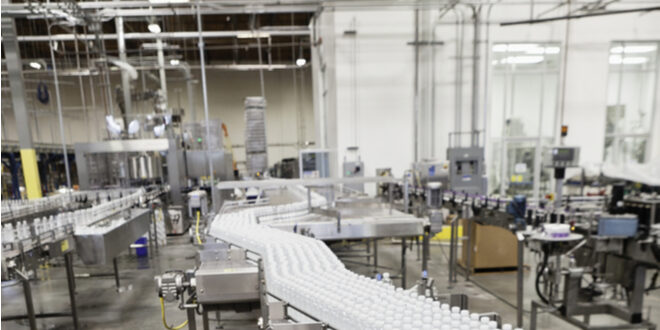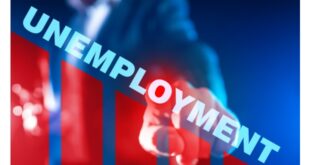As of August, the region’s manufacturing sector has grown for 12 consecutive months, meaning it survived the pandemic. How it will perform against the Delta variant, or any other variants that might appear, remains to be seen, but indications are the sector will continue to grow for awhile.
The Inland Empire is best known for logistics, a sector so strong and consistent that Riverside and San Bernardino counties are sometimes called the warehouse of the western United States.
The region’s manufacturing sector usually doesn’t attract much attention, but maybe it’s time to start giving it some credit.
As of the end of August, the manufacturing sector in the Inland Empire has been growing, uninterrupted, for one year.
The region’s purchasing managers index in August was 57.7, comfortably above the 50 benchmark that determines growth or decline, the Institute of Applied Research and Policy Analysis at Cal State San Bernardino reported Sept. 1.
The August report, although a three-point decline compared with July, marked the 12th consecutive month that the index was above 50. That’s a significant accomplishment in any economy, but particularly so during a pandemic.
The national manufacturing sector wasn’t so lucky.
Although largely recovered now, the U.S. manufacturing sector took a severe hit in 2020, mostly because International supply lines were so disrupted. By the end of last year, the U.S. Industrial Production Index was at 105.7, a “substantial dip” from its pre-pandemic level of 110, according to Deloitte, the London-based international accounting and professional services firm.
But no one should be too surprised that manufacturing in Riverside and San Bernardino Counties kept its head above water during the past year, said Barbara Sirotnik, director of the institute and co-author of the index.
“No, I really wasn’t that surprised,” Sirotnik said. “It’s about what I expected to happen. Most of the numbers indicated that manufacturing would stay up. One thing that helped us was that manufacturing was doing well before the pandemic hit. It wasn’t in the stratosphere, but it was doing well.”
“And logistics was doing wonderfully because more people were shopping online. That has really helped the Inland Empire economy a lot. People still have to buy things, even during a pandemic.”
The report did have some negatives.
Production in the two-county region was 53.2, down from 58.6 in July, and new orders, also at 53.2, were up only slightly month-over-month.
But those numbers might be the most important in the August index, because they indicate that manufacturing in the two-county region will likely continue to grow, at least for the next few months.
The commodity price index last month was 83.9, which the report called “extremely high.”
Perhaps the most ominous number in the report was the employment index, which went from 58.6. in July to 48.4 in August. That trend is disrupting both production and supply chains, a problem that’s been around since COVID-19 became an international health crisis in the spring of 2020.
Each month the purchasing managers surveyed are asked how they believe the local economy will perform during the next three months. They seldom make optimistic forecasts, and the August index was no exception.
Only 13 percent of the purchasing managers surveyed said they expect the local economy to get stronger during the next three months, while 57 percent predicted it will remain unchanged.
Thirty percent said they expect the local economy to get weaker during that time, up from 19 percent in July, according to the report.
The August report also addressed the difficulty some companies are having getting employees, how some materials have gotten more difficult to find – including wood, metal, plastic, steel, aluminum, and packaging – and how many companies are paying higher wages than they ever have because of COVID-19.
“We gave everyone raises back in March and April,” one purchasing manager stated in the anonymous survey. “It was not so much as to retain them, but since times are good, we felt it’s important to reward our employees with better pay.”
“However, my new hires have all come in at higher starting wages than we used to pay in 2020. At this point, we are just happy to find good employees.”
The fact that the Inland manufacturing sector kept growing during the last 12 months was not unexpected, said Jay Prag, professor of economics at the Drucker School of Management at Claremont Graduate University.
“I wasn’t surprised, either,” Prag said. “I really expected it to stay up. Local manufacturing is still in recovery mode, and it’s been slow.”
Business dropped only briefly at A&R Tarpaulins in Fontana when the pandemic hit, and things have stayed up since then, said Bud Weisbart, co-owner of the company.
A&R makes protective coverings, mostly for the aerospace industry. It made a little more than $3 million last year and expects to make about $4.6 million this year.
“I’m way too busy right now for a guy my age,” said Weisbart, who said he will turn 82 in March. “We sold a lot of shades and awnings last year, probably because of the heat, and we had a big contract that started late last year and went into this year. We never really slowed down very much.”
 IE Business Daily Business news for the Inland Empire.
IE Business Daily Business news for the Inland Empire.


